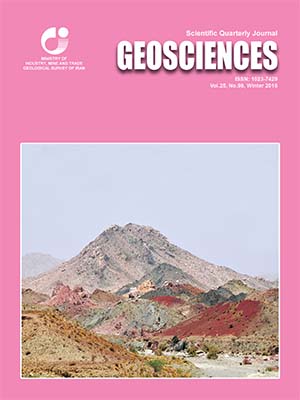Document Type : Original Research Paper
Authors
1 Assistant Professor, Group of Physical Geography, Faculty of Literature and Humanity Sciences, University of Jiroft, Jiroft, Iran
2 Assistant Professor, Group of Physical Geography, Faculty of Humanities, Tarbiat Modares University, Tehran, Iran
3 Assistant Professor, Reserch Institute for Earth Scinces, Geological Survey Of Iran, Tehran, Iran
4 Professor, Department of Physical Geography, Faculty of Geography, University of Tehran, Tehran, Iran
5 Associate Professor, Islamic Azad Unversity North Theran Branch; Reserch Institute for Earth Scinces, Geological Survey Of Iran, Tehran, Iran
Abstract
Mud volcano is a natural and attractive phenomenonwhich is generally found as a dome-like feature and basin-shaped in some cases. Mud volcanoes comprise mixtures of water, mud and gas. They are found in most parts of the world particularly in the Alps and Himalaya belts. In Iran, most of the mud volcanoes appear in the coastal plains of the Caspian and Oman seas. Mud volcanoes are commonly considered as indicating presence of oil and gas reserves, and are used to predict subsurface hydrocarbon fields. One or two mud volcanoes were formerly found between Minab and Jask in the Hormozgan Province. Remote sensing study followed by a field work of 30 days in this research led, for the first time, to the identification of 15 mud volcanoes in the Hormozgan Province using clustering analysis. During the field study, a sediment sample was taken from each mud volcano, which was then geochemically analyzed by ICP-OES. In the meantime, grain size was also determinedfor each sample. The SPSS software was used to process the data.After determining correlation coefficients, clustering analysis,and relationship between different factors obtained from Scuter plot, it turned out that AL, Fe, Ni, V, Sc, Ti, Cr, Zn, CU, Mn, Na, K, Li and Be in the mud volcanoes aregeogenic/continentalin origin, while the source of Ca,Mn and S is marine/intra-basinal and biogenic.
Keywords

